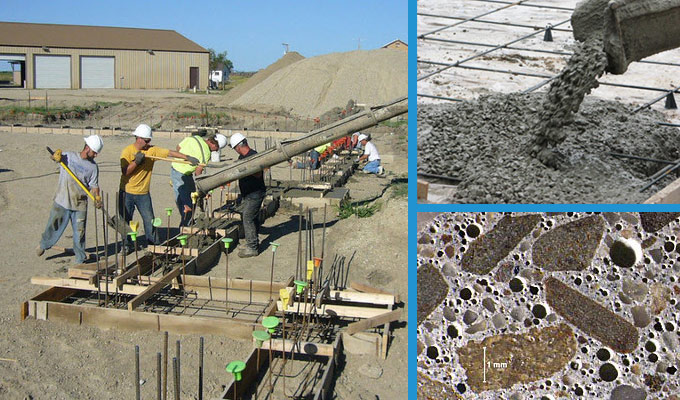
Benefits and drawbacks of air entrained concrete
Air entrained concrete is formed by providing little air bubbles into concrete is called air entrainment. Air entrainment is performed with the use of air entraining Portland cement or air entraining agents like admixture.
The amount of air in such concrete is normally kept among four to seven percent of the volume of concrete.
Various types of methods like galvanometric method, volumetric method and pressure method are used to work out the concrete volume. The air bubbles mitigate internal pressure on the concrete by arranging chambers for water to be extended at the time of getting freezed.
Method - Air in concrete in integrated in the following ways:
? By utilizing gas forming materials like aluminium powder, zinc powder and hydrogen peroxide. ? With the application of surface active agents that minimizes surface tension. These may contain natural wood resins and their soaps, animal or vegetable fats or oils, alkali salts of sulfonated or sulphated organic compounds. ? With the help of cement dispersing agents.
Benefits - Given below, some of the benefits of air entrained concrete:
1. Workability of concrete is raised significantly.
2. The impact of freezing and thawing is reduced with air entraining agent.
3. Bleeding, segregation and laitance in concrete are decreased.
4. Entrained air makes the sulphate repelling strength of concrete.
5. Minimizes the chance of shrinkage and crack development in the concrete surface.
Drawbacks - Given below, some of the drawbacks of air entrained concrete:
a. The strength of concrete is reduced.
b. Air entraining agent can raise the porosity of concrete and consequently the unit weight is decreased.
c. Air-entrainment in concrete should not be performed if the site control is not superior because the air entrained in a concrete differs with the alteration in sand grading, errors in proportioning and workability of the mix and temperatures.


